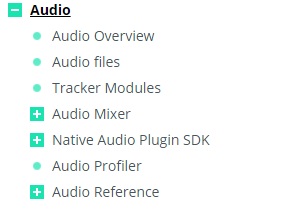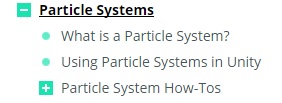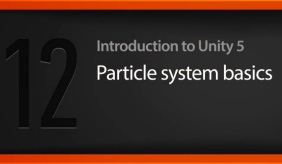 • Building Levels in Unity.
• Chapter 8: Bringing the Sound..
Discusses how the sound works and sets up the ambient sounds and music for our level using Audio Mixer.
• Building Levels in Unity.
• Chapter 8: Bringing the Sound..
Discusses how the sound works and sets up the ambient sounds and music for our level using Audio Mixer.
• Audio sources and receivers
• Introduction to audio mixer
• Filters and reverb zones
• Chapter 9: Exploring the Particle System..
Provides you with a practical example of creating a particle system, recommendations,
tips and tricks, and a challenge to create your own particle system with provided resources.
Although particles are fun, they can be overwhelmed by a variety of options available
in the Particle editor.
• What are particles?
• The particle editor
• Coin particles
 • Audio.
Unity’s Audio features include full 3D spatial sound, real-time mixing and
mastering, hierarchies of mixers, snapshots, predefined effects and much more.
Read this section to learn about audio in Unity, including clips, sources, listeners, importing and sound settings.
• Audio.
Unity’s Audio features include full 3D spatial sound, real-time mixing and
mastering, hierarchies of mixers, snapshots, predefined effects and much more.
Read this section to learn about audio in Unity, including clips, sources, listeners, importing and sound settings.
 • Particle Systems.
In a 3D game, most characters, props and scenery elements are represented as meshes,
while a 2D game uses sprites for these purposes. Meshes and sprites are the ideal
way to depict “solid” objects with a well-defined shape. There are other entities
in games, however, that are fluid and intangible in nature and consequently difficult
to portray using meshes or sprites. For effects like moving liquids, smoke, clouds,
flames and magic spells, a different approach to graphics known as particle systems
can be used to capture the inherent fluidity and energy. This section explains Unity’s
particle systems and what they can be used for.
• Particle Systems.
In a 3D game, most characters, props and scenery elements are represented as meshes,
while a 2D game uses sprites for these purposes. Meshes and sprites are the ideal
way to depict “solid” objects with a well-defined shape. There are other entities
in games, however, that are fluid and intangible in nature and consequently difficult
to portray using meshes or sprites. For effects like moving liquids, smoke, clouds,
flames and magic spells, a different approach to graphics known as particle systems
can be used to capture the inherent fluidity and energy. This section explains Unity’s
particle systems and what they can be used for.
• Youtube AAV Week 6.

 • Digital Tutors - Introduction to Unity 5.
• 12 Particle system basics.
15:02
• Digital Tutors - Introduction to Unity 5.
• 12 Particle system basics.
15:02
 • Unity Tutorials - Audio.
Everything for Game Audio and Sound design in Unity.
• Unity Tutorials - Audio.
Everything for Game Audio and Sound design in Unity.





